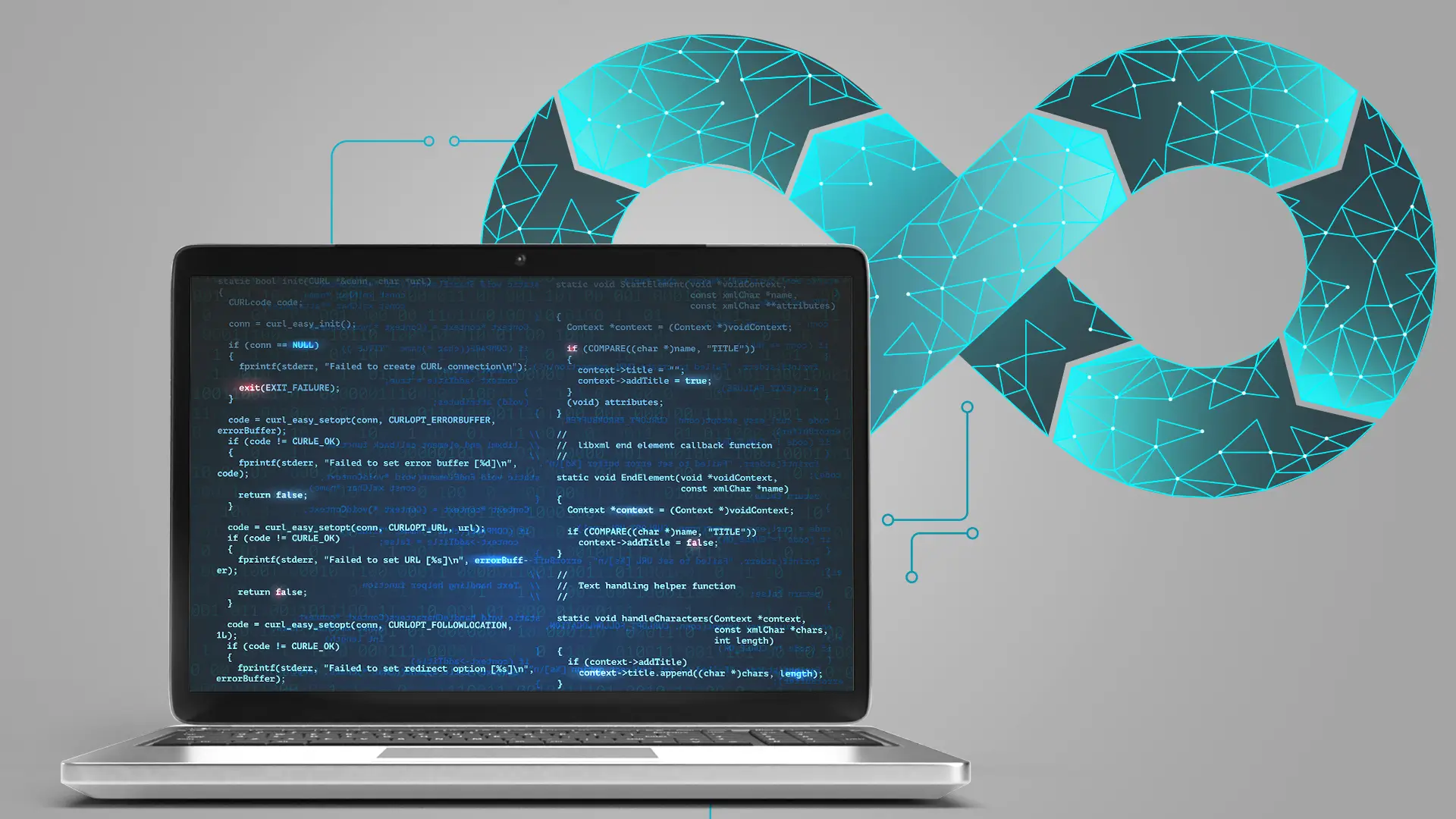Cyber security is a concern that looms large in today's society. The Log4j vulnerability is another recent concern added to an already long list. While the Biden administration did issue a directive to fix vulnerabilities in hardware and software systems, the fact remains that all organizations need to invest time and effort to manage known and unknown threats.
Improving software code quality is a great way to do this. So, how do you start?
Taking Preventive Measures
The current approach to security is reactive. Organizations work on mitigating risk, testing website security, and improving security once a threat has emerged. This approach is problematic as it leaves organizations open to sabotage. This culture needs to change.
Taking preventative measures helps build a solid foundation against software security threats. However, it gets difficult to explain to decision-makers why they should invest in preventive measures - especially when the organization has a clean security record.
To change the security culture inside the organization, security teams can highlight the time and cost savings that preventing security breaches can get instead of showing the cost incurred due to one.
Finding and fixing software vulnerabilities as the developers write the code is a great way to ensure releases are on time. Additionally, preempting potential security risks saves time and money.
Upskilling
The critical infrastructure sectors, like government agencies, are most at risk of security breaches since they operate on older, vulnerable devices, legacy operating systems, and their need for disconnected environments. While adapted to TCP/IP networks, their systems may not have security upgrades.
A skilled workforce can effectively manage the security of legacy systems. Upskilling developers is a great way to ensure the software security and run effective web application security testing. Since they are writing the code, they must know how to avoid security threats. HeadSpin offers an excellent platform for developers to improve their skills or anyone who wants to learn how to automate effectively.
The HeadSpin University offers courses on Appium and connects you with leaders in the test automation industry. A core Appium contributor and a HeadSpin employee, Jonathan Lipps, presents students with walkthroughs on building apps and using automation.
Understanding The Attack Life Cycle
The 2022 Threat Report by Blackberry identifies the life cycle of a security attack. Here's the gist:
Initial Reconnaissance
Initial reconnaissance is either passive or active. It is difficult to detect when the recon is passive as it does not touch any target system. A more active recon will probe for system vulnerabilities. Security teams must be alert to threats right from this stage. Knowing organizational assets, reducing the attack surface, monitoring, and scanning are a few strategies that will help.
Initial Compromise and Foothold Establishment
If attackers discover a vulnerability in the recon phase, they take advantage of it and subtly establish their presence. Threat actors thus have access to the system under attack and other systems in the network. A layered defense of blocking, host visibility, and an AI-based network will help detect such activities.
Escalation
In this phase, the attackers have access similar to the exploited application. Security teams must include memory protection and script blocking as defense mechanisms. Slowing the attackers down can give them time to stop the attack.
Internal Recon and Lateral Movement
Attackers have infiltrated the system and have gained sufficient privileges. In this phase, they move through the network to achieve their goal. One way to defend against this situation is through network segmentation to keep track of anomalies from stole credentials.
Complete
This last phase is when the attackers have completed their mission, selling stolen data or unlocking encrypted data.
Recommended Post: Why should you invest in Mobile App Security Testing?
Shifting Left
Shifting left is a DevOps practice that involves testing application security early in the development lifecycle. When developers discover vulnerabilities, they also need to find and fix the contributing factors.
In complex systems, this is difficult as there is never a single issue. Often, it is a series of contributing factors that cause the problem. At times, security issues may require architectural changes - which are time-consuming.
Shifting left encourages the practice of building with quality throughout the development process. Regarding security, it means integrating tests into each day's development work. Fixing security concerns early in the development process ensures a highly secure software build.
Here are some best practices to follow:
- InfoSec For Software Design - Involving the InfoSec team in the software design process is excellent to ensure that developers meet security protocols. While this may change your development process and require training your developers, it is worth it.
- Security-approved tools - To help standardize the developer code, it is essential to provide developers with preapproved libraries. Standardized code allows the InfoSec team to review the code for vulnerabilities.
- Automated Testing - Automating security tests can help identify common security threats. They can also embed into your CI/CD pipeline and improve time to market.
Also check: Mobile App Security Testing Challenges and Best Practices
Threats to Mobile Security
A report by The Guardian highlighted that, mobile devices in North America saw a 300% increase in phishing attacks via SMS. Insecure apps threaten any organization, primarily when employees use personal devices to perform professional tasks. Poorly developed apps resulting from a lack of mobile application security testing are easy targets for security breaches.
AI for Mobile Security
AI-driven solutions are effective as they use predictive analysis to help prevent threats. It can analyze files for exploitable code and block these apps from being executed.
AI helps classify network traffic; without the risk of human error; this helps prevent unintentional data leaks. It can also keep track of devices running out of date software, OS, firmware, etc.
HeadSpin offers an AI testing & DevOps collaboration platform that integrates into your CI/CD pipelines and enables mobile application security testing. It highlights surface issues and the underlying root causes and delivers actionable regression and aggregation insights. You can test your applications on real devices anywhere in the world.
Security Trends To Know For 2022
Decentralized Security Decisions
With an expanding attack surface and requirements for agile security, distributing the security decisions across the organization instead of centralizing it is crucial. Gartner's report highlights that 88% of Boards of Directors believe cybersecurity is a business threat and not just a technology threat.
Therefore, decision-makers will need to work with security teams to develop security strategies and reframe investments in the business context.
Improvements to Identity Threat Access Management
Threat actors are now targeting IAM (identity and access management) systems, making misuse of credentials a primary attack area. While improving IAM capabilities does help, it is essential to find ways to identify potential vulnerabilities early on in the development process. It is also necessary to have tools to help protect identity systems, identify compromised systems, and provide effective solutions.
Digital Supply Chain
Attacks on the digital supply chain offer attackers a high return on investment. The Log4j vulnerability is proof of this. Gartner's report highlights that by 2025, worldwide, 45% of organizations will experience attacks on their software supply chains.
Organizations have started to take a more deliberate approach to mitigate their digital supply chain risks. These include vendor/partner segmentation, resilience-based thinking, scoring, and staying ahead of security regulations.
Attack Surface Expansion
Organizations using IoT, cloud applications, social media, digital supply chains, open-source code, and more are associated with risks; this expands their attack surfaces.
Organizations must move past traditional security detection and monitoring approaches to DRPS, EASM, and CAASM to help automate the coverage of security gaps.
Also Read: 10 Crucial Steps for Testing Mobile App Security
Conclusion
2021 saw a drastic increase in organized attacks on software security. If last year is a reference point, we can be confident that no organization is safe from cyber-attacks. Taking a preventative approach to security is the best way forward. Applying the shifting left practice and fixing vulnerabilities early in the development process will ensure your applications are secure.
FAQs
Q1. Is using mobile devices a security risk?
Ans: Using mobile devices for sharing data adds more access points to your network, thereby creating more opportunities for a security breach. Other risks involve using personal devices within the workplace and losing mobile devices.
Q2. What are the barriers to addressing cyber security issues?
Ans:
- A lack of process documentation
- Complex threats
- No visibility and influence within the organization
- Insufficient funding
- Unavailability of cybersecurity professionals
Q3. Why is encryption crucial in software security?
Ans: Encryption plays a critical role in software security that helps ensure sensitive data remains confidential and protected from unauthorized access. Organizations should focus on implementing robust encryption algorithms and key management practices to secure and protect data at rest and in transit.




































.jpg)





-1280X720-Final-2.jpg)






